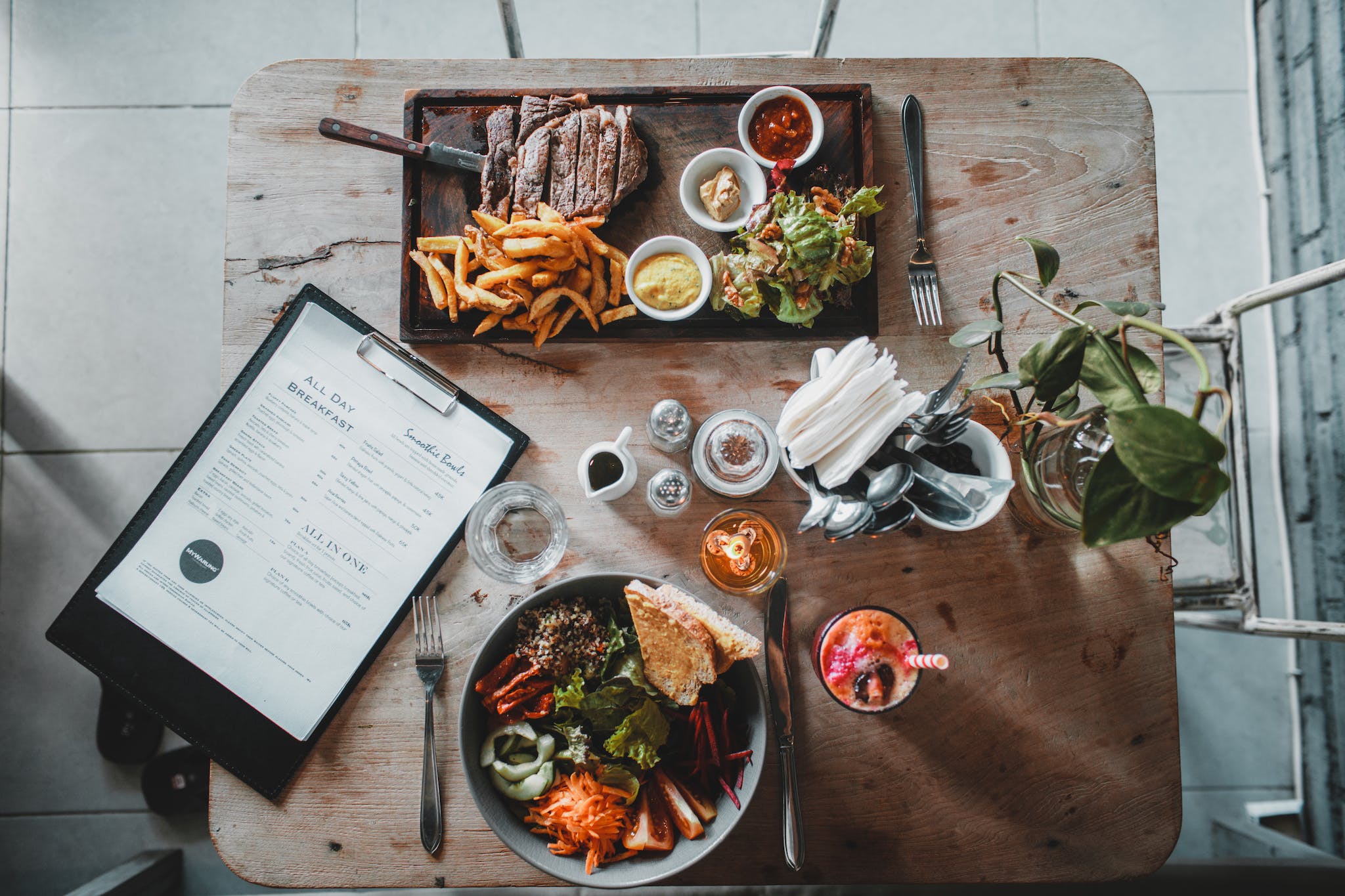Now, the world of food and beverage (F&B) industry is tough because there are many other businesses competing with you. It’s not just about having a cool logo or a great ad.
It’s about understanding why people like certain foods and figuring out how to reach those people.
It’s also about keeping up with the latest trends in the food world and using them to help your business.
And it’s about staying ahead of the competition by being creative and coming up with new and exciting ways to promote your food.
But don’t worry, with the right marketing plan, you can make your food business stand out in this super competitive industry.
In this blog, we’ll share easy-to-understand marketing ideas and give you 100 SEO keywords that people often search for on the internet.
These marketing strategies and keywords can help your business grow. Let’s dive into the world of digital marketing for food and beverage businesses.
Food and Beverage Industry: Statistics and Trends
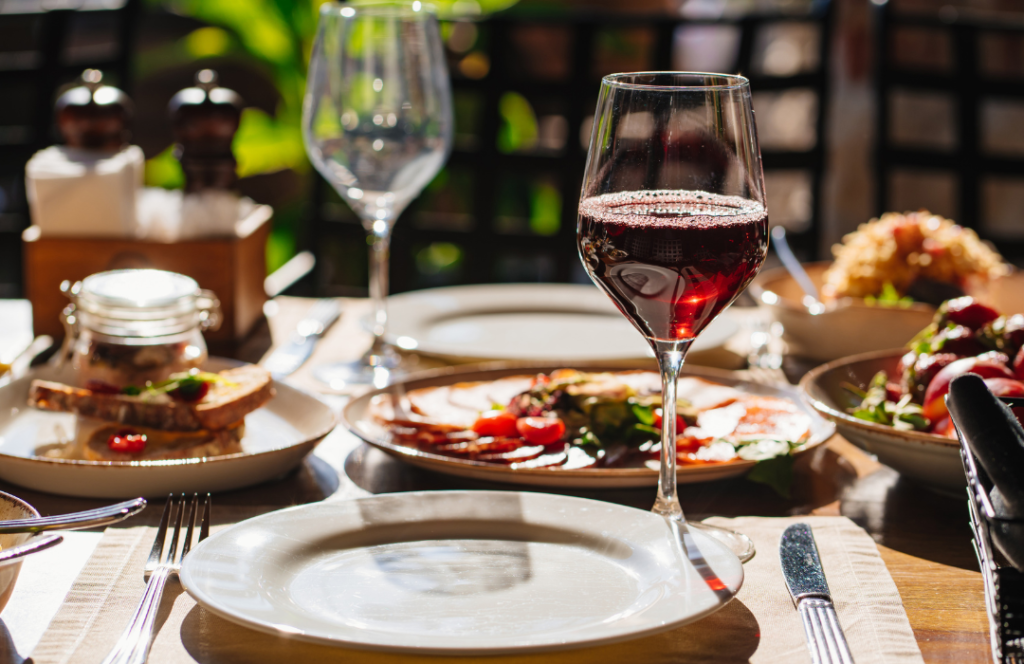
These statistics and trends provide valuable insights into the dynamic and ever-evolving food and beverage landscape. Understanding and adapting to these changes can help your business thrive in this competitive industry.
- Spending on food: In 2021, the U.S. Bureau of Labor Statistics found that people spent about 12.4% of their money on food, ranking second only to spending on housing and transportation. This shows that folks are willing to put their money into food and drinks, making it crucial for businesses to market their offerings effectively.
- Global market growth: According to The Business Research Company, the global food and beverages market grew from $6,729.54 billion in 2022 to $7,221.73 billion in 2023. That’s a growth rate of 7.3%. What’s more, it’s expected to keep growing and reach $9,225.37 billion by 2027 at a rate of 6.3%.
- U.S. industry growth: Gitnux reported that the U.S. food and beverage industry’s revenue is expected to increase by 1.4% each year between 2021 and 2026. In 2021, the food services and drinking places industry added $524.03 billion to the U.S. economy.
- Plant-based foods: There’s a growing interest in plant-based foods, with the global market projected to reach $35.54 billion by 2027. North America is leading the way in this trend.
- Noteworthy trends: In the U.S. food and beverage industry, several significant trends are emerging. These include a rising demand for healthier food options, a boom in online shopping for food, and the introduction of advanced technologies like blockchain.
- Key success factors: To thrive in the U.S. food and beverage industry, it’s crucial to keep a close eye on what consumers want, focus on making high-quality products, and be open to trying out new and innovative ideas.
Marketing Strategies for Food and Beverage Industry
1. Brand positioning
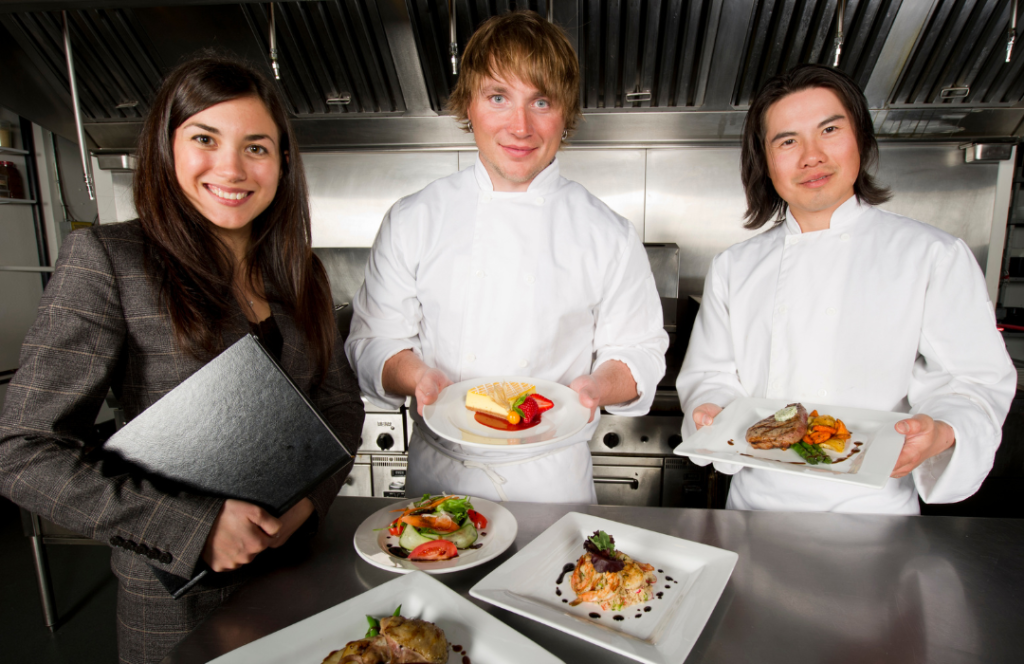
One of the most crucial steps in food and beverage marketing is establishing a clear brand position.
This means creating a unique identity for your food business that distinguishes you from others in the market.
Your brand’s position should mirror the values and personality of your company.
It’s essential to convey this identity consistently across all your marketing materials.
A strong brand position isn’t just about catchy slogans or flashy logos; it’s about telling a story that resonates with your customers and keeps them coming back for more.
Here are three specific examples of brand positioning for food and beverage businesses:
- Example 1: A smoothie shop that focuses on healthy, fresh ingredients. They use local, organic fruits and veggies to create nutritious drinks. Their branding shows colorful pictures of fruits, and their tagline might be “Delicious and Good for You.”
Why it works: This brand attracts health-conscious customers who want tasty and nutritious options.
- Example 2: A restaurant that offers food from different countries, like tacos, sushi, and pasta. They want customers to explore new flavors. Their branding has pictures of different flags, and their tagline could be “Discover Global Tastes.”
Why it works: This brand appeals to people who enjoy trying diverse foods and want an exciting dining experience.
- Example 3: A pizza delivery place that’s all about family meals and quick service. They have different types of pizzas and promise speedy delivery. Their branding shows happy families eating pizza, and their tagline might be “Pizza for the Whole Family, Fast.”
Why it works: This brand targets families and busy folks who want a convenient and tasty meal option.
2. Build a website
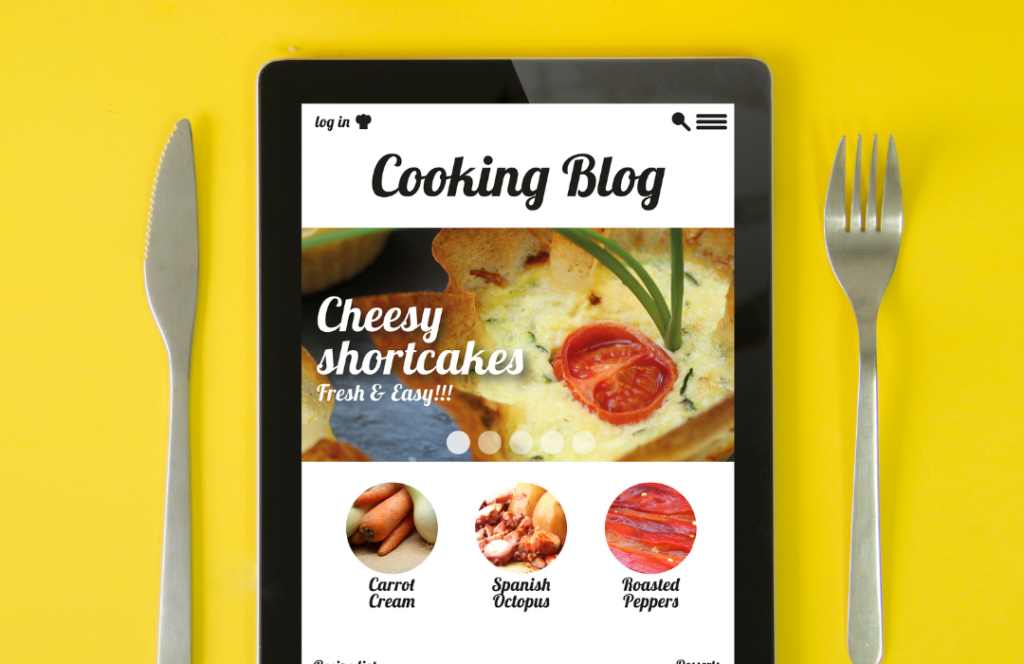
In today’s digital age, having a website is crucial for businesses across all industries, including food and beverage.
A well-crafted website can help you stay in the forefront of your audience’s minds.
Here’s what you should include in your website:
- Menu with stunning photos
People visit your restaurant’s website primarily to explore your food and drink offerings. This not only provides a better user experience but also makes it easier for customers to view on their smartphones and share the link with friends. Eye-catching photos of your dishes can make the menu even more enticing.
- Contact information
Make it effortless for visitors to find your contact details. Many of them will want to get in touch, make reservations, or find out where you’re located.
Place your contact information prominently on your navigation bar, or in the website footer. Clear and accessible contact information helps build trust with your customers. - Social media channels
Boost your online presence by linking your social media accounts. Platforms like Instagram and Pinterest are great for showcasing beautiful food and drink photos, sharing recipes, and engaging with potential customers.
Social media provides an additional channel for people to connect with your restaurant and stay updated on your latest offerings and promotions. - Your inspirational story
Share the background and values of your business. Have you received awards or been featured in publications?
Use the “About Us” page on your website to showcase your achievements and what sets your brand apart.
This storytelling can give people a compelling reason to visit your establishment and become loyal customers.
3. Emphasize visuals
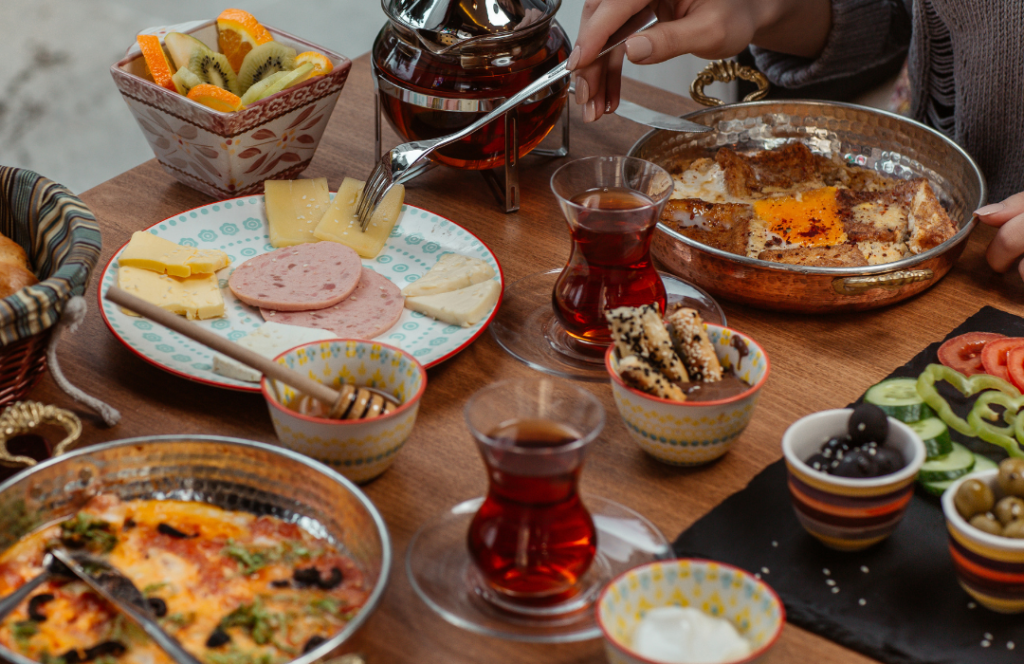
Professionally taken food photos have a powerful effect on customers. They create an instant craving, making people want to try the dish right away. This can lead to online orders, table reservations, or visits to your restaurant.
Did you know that around 46% of people in the U.S. either look at pictures of food or watch food videos on social media each month?
People are drawn to food visuals because they evoke a sensory experience. When customers see a mouthwatering image of your food, it should make them think, “I want to taste that!”
Restaurants that switched from text-based menus to photo-based menus for online orders saw a remarkable 25% increase in conversion rates. This means more people are inclined to order when they can see what they’re getting.
The beauty of images lies in their universality. They don’t require an introduction or a caption to convey a message.
Pictures speak a global language, transcending barriers. By using suggestive images alongside your menu, you break down language barriers and appeal to customers from all around the world.
4. Start a blog
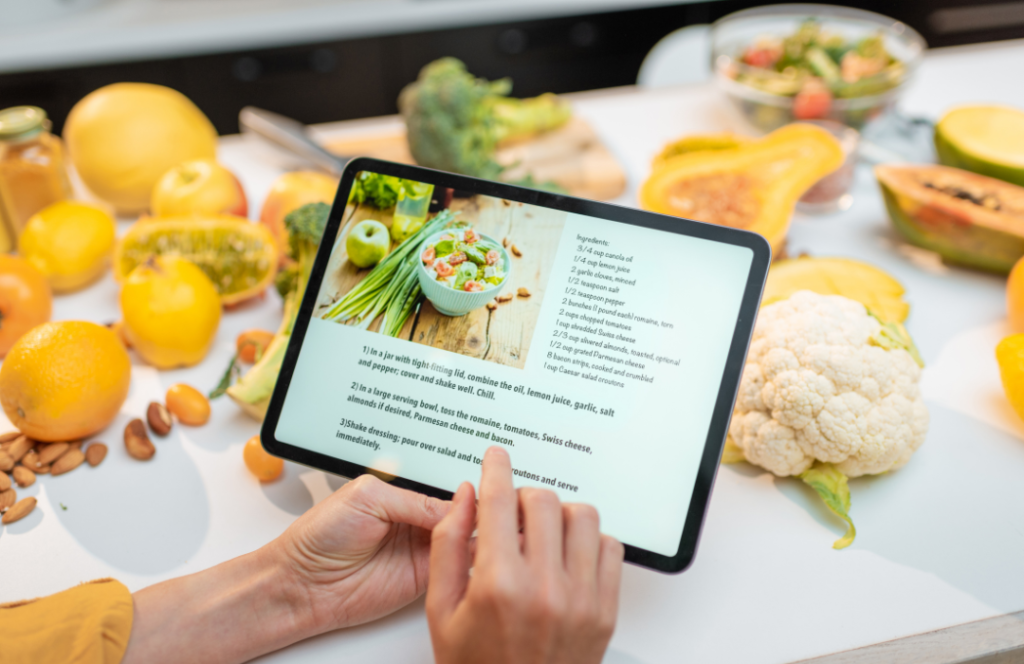
Just like in any other field, a blog in the food and beverage industry allows you to share your recipes and expertise with the world.
When you provide people with valuable information, you establish yourself as an expert in their eyes and become a leader in your industry.
Blogging is a fantastic way to incorporate SEO keywords into your content. This helps your website appear more frequently in search engine results, like Google.
When someone searches for food-related topics or recipes, your blog can pop up, driving more traffic to your site.
Maintaining a blog positions your brand well for collaborations with food bloggers and influencers.
These partnerships can significantly increase your brand’s visibility and introduce your products to new online customers.
Influencers and bloggers can share their experiences with your food and drinks, attracting more people to your business.
Related: 11 Compelling Reasons Why Your Business Should Have A Blog
Some blog ideas for you:
- Recipes for making X
- Best healthy food for specific use cases
- Healthy indigenous food
- Cooking X on a budget
- Best home food recipes
- Best drinks to pair with different foods
- Best beverages for certain use cases
- Alcoholic beverages/Non-alcoholic beverages
- Best cookbooks
- Restaurant-related events locally or internationally
- A guide to eating for a specific culture
- History of restaurant
5. Focus on SEO
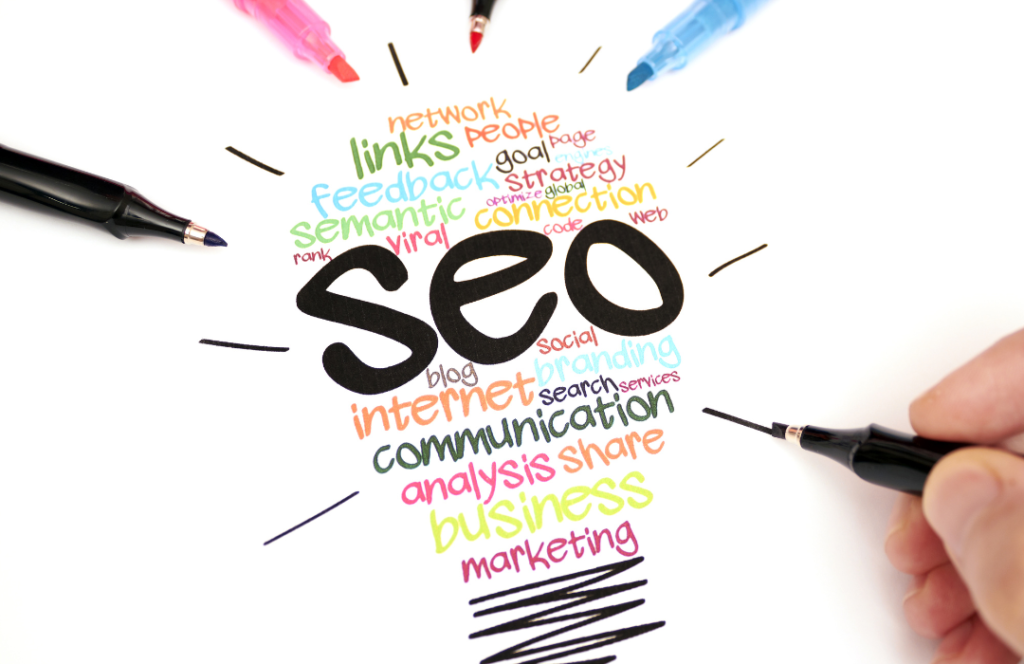
SEO is the secret sauce for modern business success. It ensures your online visibility and helps you connect with your target audience effectively.
By prioritizing SEO, you can thrive in the digital landscape, no matter the size or location of your food and beverage business.
In the past, local businesses relied on foot traffic, but in the smartphone era, things have changed.
Even businesses in prime locations can struggle to catch the eye of modern, tech-savvy customers. This is where SEO becomes vital, helping you stand out in the digital crowd.
If you want to grow your business within a specific neighborhood or community, it’s essential to create content that resonates with local sentiments.
This will help you appear in local search results, making it easier for people in your community to find you.
Encourage your customers to provide feedback, especially if they’ve had a great experience with your food and services.
Don’t limit this to feedback forms; ask them to share genuine reviews on platforms like Google. Positive reviews create a buzz, and word-of-mouth spreads your restaurant’s name far and wide, attracting visitors from distant locations.
Related: Crucial SEO: Understanding Its Importance In Digital Marketing
6. Build an email list

Building and maintaining an email list is a smart move for your food and beverage business. It’s a direct and efficient way to connect with your audience, keep them engaged, and drive success in an ever-evolving industry.
Sending emails is a fast and straightforward way to reach your audience. All you need are email addresses of potential and current customers.
You can use email campaigns to share news about new products, exciting events, competitions, and discount coupons, keeping your customers engaged and informed.
To capture your readers’ attention, include eye-catching visuals like images or videos in your email content.
However, be mindful of file sizes and optimize your visuals to ensure quick loading times and to avoid being flagged as spam.
Email marketing is cost-effective and can deliver a substantial return on investment when done right.
Ensure your emails are designed to be mobile-friendly, with responsive layouts that look good and are easy to navigate on both desktop and mobile platforms.
Related: 4 Email Marketing Secrets For Growing Your Business
7. Be on social media
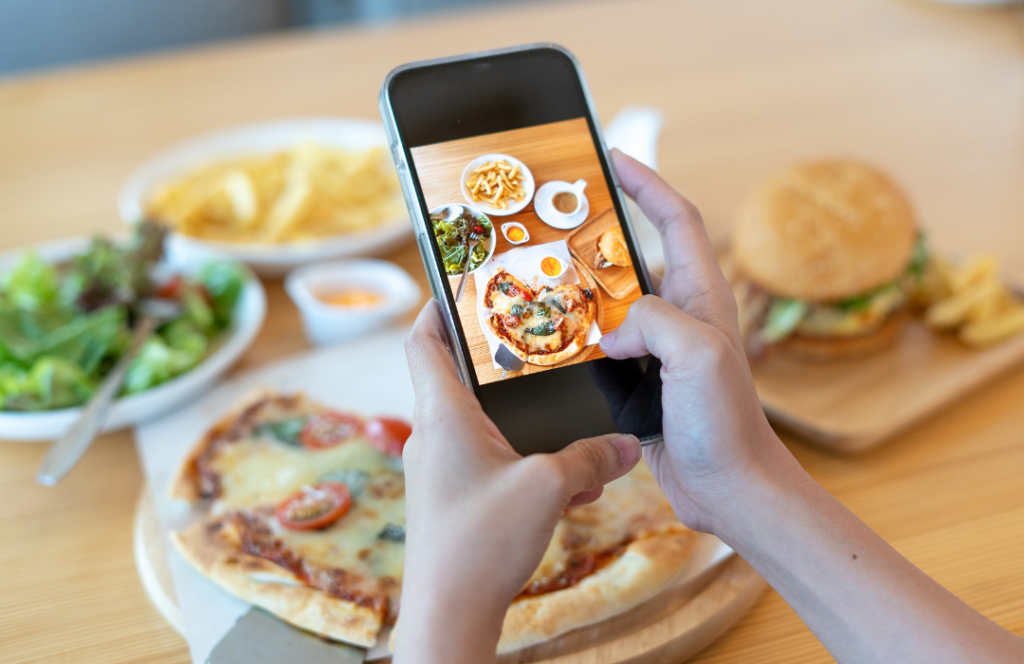
Social media is your digital hub for connecting with customers, sharing exciting updates, and building your restaurant’s online presence.
It’s a dynamic tool that not only informs but also influences consumer decisions and improves your overall visibility in the digital landscape.
Social media provides a lightning-fast way to inform your audience about your restaurant’s news, such as menu changes, daily specials, holiday hours, events, and promotions. It keeps your customers in the loop, ensuring they stay well-informed.
According to GloriaFood, 72% of customers check out Facebook comments and images to make informed decisions about restaurants.
People truly “eat with their eyes.” Platforms like Instagram, Facebook, and Pinterest are ideal for showcasing your food and beverages.
Not only can you post mouthwatering pictures of your offerings and events, but your customers can also share their reviews and photos, further promoting your business.
Social media can boost SEO and your business’s online visibility. While social media isn’t directly part of Google’s search algorithm, it indirectly impacts your online search ranking.
Popular and authoritative social media pages with significant traffic can enhance your SEO. The algorithm considers factors like popularity, authority, and website traffic, all of which can receive a boost from an active social media presence.
8. Collaborate with influencers
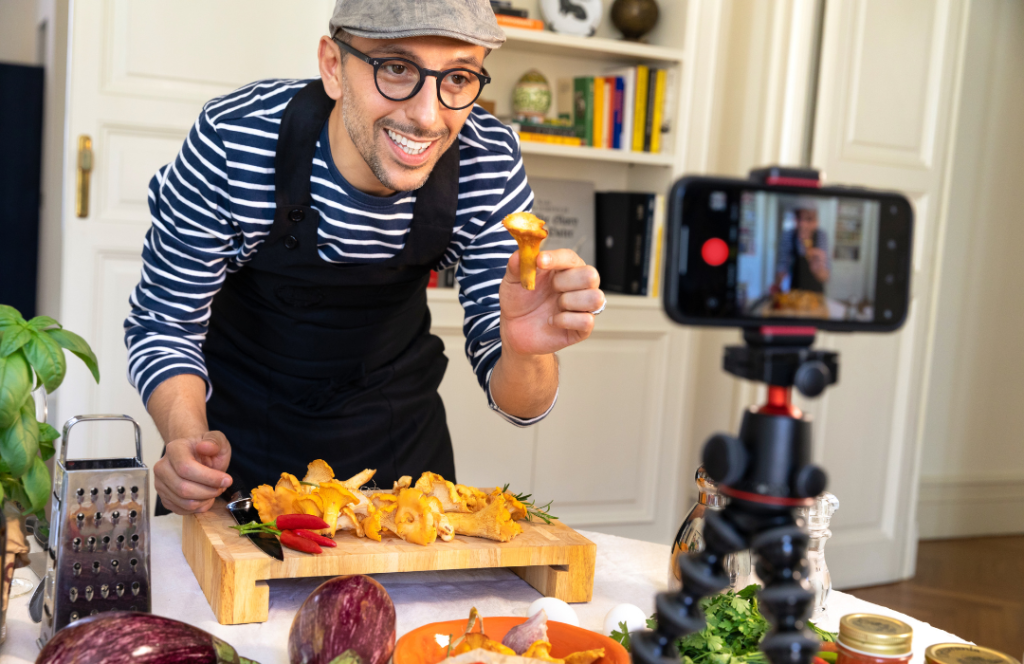
In a crowded food and beverage industry, breaking through the noise can be tough. Traditional marketing often struggles to make a lasting impact. This is where influencer marketing comes to the rescue.
Influencer marketing helps you stand out. When you partner with influencers who resonate with your brand values and audience, you cut through the competition and gain credibility. This creates a genuine connection with potential customers.
Moreover, influencers create authentic and engaging content, showcasing your food and beverages. This allows consumers to visualize how your products fit into their lives, increasing the chances of purchase.
In the age of Instagram, YouTube, and TikTok, influencers are trusted sources of information and inspiration for their followers.
By collaborating with influencers who have a strong online presence and loyal followers, you can tap into this power and reach a wider audience.
It’s a way to connect with potential customers who might not come across your brand through traditional marketing.
9. Prioritize sustainability
Incorporating sustainability into your food and beverage business is not just a trend; it’s a significant opportunity. Here’s why it matters:
- Awareness of environmental impact:
People are becoming more aware of the environmental consequences of human activity, particularly in the realm of food.
Consumers now understand the importance of organic, locally and ethically sourced, minimally processed, and sustainable foods. They want brands to take responsibility for their environmental impact. - Supporting values-driven brands:
Customers are actively seeking out brands that align with their values, especially sustainability.
They want to support businesses that genuinely embrace environmental responsibility and share their concerns about the planet’s well-being. - Rising demand for plant-based options:
A substantial 30% of consumers are eager to make their diets more plant-based. This creates a massive opportunity for brands, stores, and restaurants offering plant-based foods.
It’s a reflection of changing dietary preferences driven by health and environmental concerns. - Innovation in plant-based products:
The natural channel is where innovation often takes root. For instance, plant-based milk now accounts for 42% of all milk sales by dollar sales.
This growth highlights the increasing popularity of plant-based alternatives and the need for businesses to adapt to changing consumer preferences.
Download 100 SEO Keywords Here
Conclusion
In conclusion, succeeding in the competitive food and beverage (F&B) industry goes beyond a catchy logo. It requires understanding consumer preferences, leveraging digital marketing strategies, and staying updated on food trends. With the right approach and a strong list of SEO keywords, your F&B business can stand out.
Key statistics and trends emphasize the industry’s growth and opportunities. To excel, establish a unique brand position, create a user-friendly website, emphasize visuals, maintain an informative blog, and prioritize SEO. Engage through social media, collaborate with influencers, and embrace sustainability.
Combining these strategies with a deep understanding of consumer trends can propel your F&B business to the forefront, boosting click-through rates, enhancing keyword research, and increasing brand awareness.

